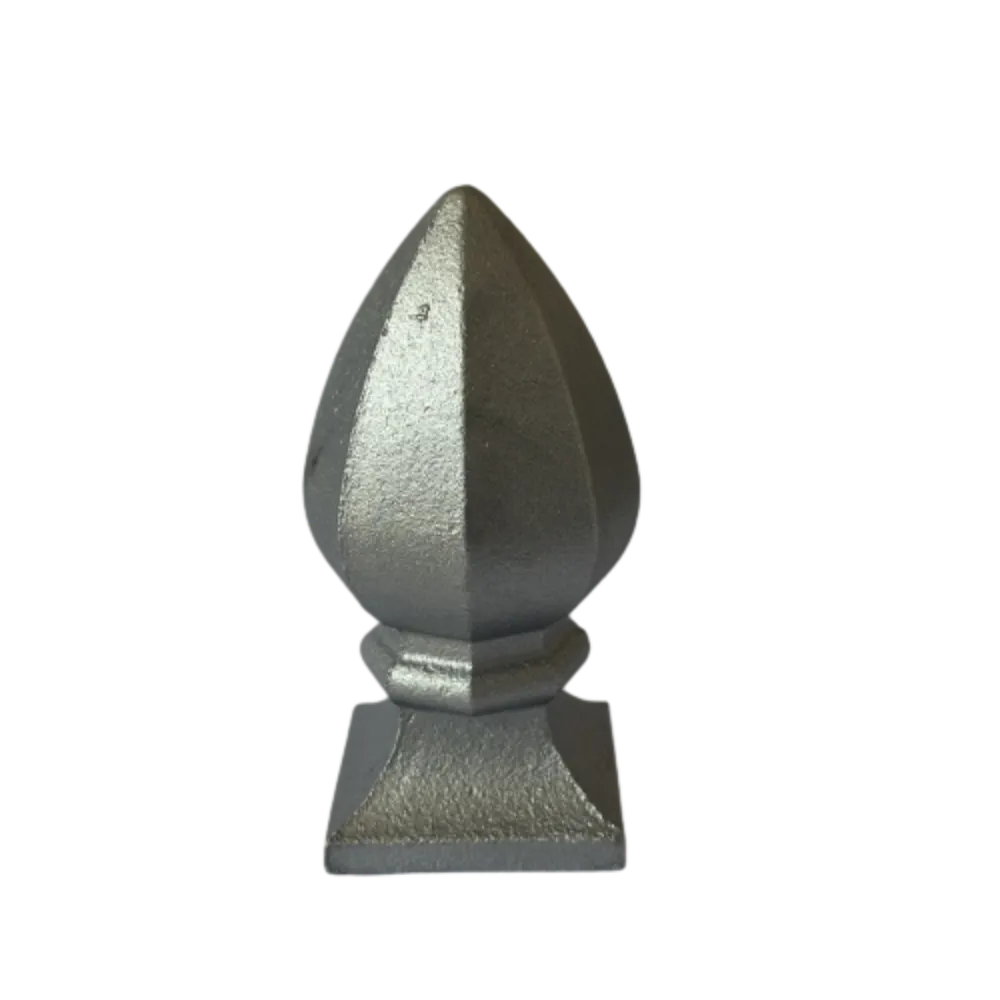Cast Iron Post - Durable, Decorative, Customizable Posts
Are cast iron posts making a comeback? Short answer: yes—because they last
In architectural metalwork, trends read like a pendulum: sleek aluminum one year, warm steel the next, and then—unexpectedly—heritage details swing back in. That’s where the humble cast iron post top shines. I’ve toured yards where weather and salt try their worst, and, to be honest, the parts that look steady after a decade are usually heavy, well-coated iron.

Product snapshot: Wrought Iron Post Tops from Shijiazhuang, China
Origin matters. Shijiazhuang, Hebei Province—long a casting hub—turns out consistent ornamental fittings. The Wrought Iron Post Tops (Ø40/50/60/80/100 mm) slot neatly onto tube and solid posts for fences, gates, railings, and even bollards. Actually, many customers say the visual upgrade per dollar is hard to beat.
Key specifications (typical, real-world use may vary)
| Material | Cast iron (EN-GJL-200 or ≈ASTM A48 Class 30); ductile option on request (EN-GJS-400-15/ASTM A536) |
| Nominal sizes | Φ40, Φ50, Φ60, Φ80, Φ100 mm sockets |
| Finish options | As-cast + primer; powder coat (≈80–120 μm); hot-dip galvanizing per ISO 1461; duplex (galv + powder) for coastal |
| Mechanical baseline | HB 170–230; UTS ≈200–300 MPa (gray iron). Ductile option higher. |
| Environmental tests | Neutral salt spray (ISO 9227) 480–720 h (coating-dependent) |
| Service life | ≈10–25 years with proper prep and duplex coating; inland installs last longer |
Process flow (what actually happens at the foundry)
- Materials: certified pig iron + returns; chemistry verified via spectrometer.
- Molding: green-sand or resin-sand; patterns tuned for fillets to avoid hot spots.
- Pouring & cooling: controlled pour temp; riser/feeder design to limit shrinkage.
- Cleaning: shot blasting; gating removed; CNC trimming for socket fit (I’ve seen the jigs—simple but effective).
- Coating: zinc galvanizing (ISO 1461) or phosphate + powder; thickness checked by magnetic gauge.
- Testing: hardness, random tensile coupons, thread/gauge checks, salt spray (ISO 9227), adhesion (cross-hatch).
- Packaging: anti-scuff wrap; export crates labeled for quick site sorting.
Application scenarios and advantages
Use these on residential fences, hotel balustrades, municipal railings, parks, heritage refurbishments, and traffic bollards. The big advantages? Mass (they feel solid), crisp cast details, and predictable fit. Compared with aluminum, a cast iron post top shrugs off minor knocks; compared with mild steel fabrications, it keeps detail sharp without pricey machining.
Vendor comparison (what buyers quietly check)
| Vendor | Origin | Customization | Coatings | Certs | Lead time | Notes |
|---|---|---|---|---|---|---|
| TJJ Iron Casting (Shijiazhuang) | China | Logos, diameters, bespoke finials | Primer, powder, ISO 1461 galv, duplex | ISO 9001 (typical), RoHS/REACH coatings | ≈25–35 days | Strong price-to-finish; export packaging |
| Global Ornamental Brand A | EU/US | Limited SKUs | Powder; galv on request | ISO 9001, CE (where relevant) | Stock for classics | Premium pricing; quick ship |
| Local Fabricator | Regional | High, but cost varies | Paint or powder | Varies | Fast for small runs | Good for prototypes |
Customization and real-world feedback
- Custom crests and city seals for municipal railings (CNC pattern or 3D-printed cores).
- Socket tweaks for odd tube sizes; hidden set-screw bosses; anti-theft pins.
- Finishes: matte black, antique iron, or RAL-matched powders. Coastal? Go duplex.
What do installers say? “Sockets fit out of the crate,” “Powder survived the forklift test,” and, surprisingly, “Clients notice the tops first.” That last one tracks with what I’ve seen on site: a cast iron post cap frames the whole fence line.
Mini case studies
Coastal resort (SE Asia): 1,200 tops, duplex coated. ISO 9227 test ≥720 h before sign-off. Two monsoons in—no blistering, minor touch-ups only.
Municipal park (US Midwest): Φ50 rounds with city emblem. Kids are rough on railings; the weight helps. Maintenance logs show paint refresh at year 6 (normal).
Standards and data points to specify
- Material: EN 1561 (grey iron) or ASTM A48; ductile to ASTM A536 if impact is critical.
- Galvanizing: ISO 1461; Powder: specify thickness and adhesion; Salt spray: ISO 9227 hours.
- QC: hardness checks, chemical analysis certificates, coating thickness reports.
Citations:
- ASTM A48/A48M – Standard Specification for Gray Iron Castings: https://www.astm.org/a0048_a0048m-03.html
- EN 1561 – Founding – Grey cast irons: https://standards.iteh.ai/catalog/standards/cen/b9f0b8b3-1c9d-4cf3-8a35-9f0c3b2a8f1d/en-1561-2011
- ISO 1461 – Hot dip galvanized coatings on fabricated iron and steel articles: https://www.iso.org/standard/68031.html
- ISO 9227 – Corrosion tests in artificial atmospheres — Salt spray tests: https://www.iso.org/standard/63543.html
-
Plough Wheel Cast Iron Material Enhances Load-BearingNewsNov.10,2025
-
Cast Iron Cooking Stove Heat Retention Ensures Even Food HeatingNewsNov.10,2025
-
Rubber Strip Shock Absorption Protects Window EdgesNewsNov.10,2025
-
Aluminum Profiles High Corrosion Resistance Suits Coastal AreasNewsNov.10,2025
-
Window Handle Aluminum Material Ensures Lightweight DurabilityNewsNov.10,2025
-
Sliding Roller Plastic Housing Fits Aluminum Sliding WindowsNewsNov.10,2025
-
 Plough Wheel Cast Iron Material Enhances Load-BearingNov-10-2025Plough Wheel Cast Iron Material Enhances Load-Bearing
Plough Wheel Cast Iron Material Enhances Load-BearingNov-10-2025Plough Wheel Cast Iron Material Enhances Load-Bearing -
 Cast Iron Cooking Stove Heat Retention Ensures Even Food HeatingNov-10-2025Cast Iron Cooking Stove Heat Retention Ensures Even Food Heating
Cast Iron Cooking Stove Heat Retention Ensures Even Food HeatingNov-10-2025Cast Iron Cooking Stove Heat Retention Ensures Even Food Heating -
 Rubber Strip Shock Absorption Protects Window EdgesNov-10-2025Rubber Strip Shock Absorption Protects Window Edges
Rubber Strip Shock Absorption Protects Window EdgesNov-10-2025Rubber Strip Shock Absorption Protects Window Edges












